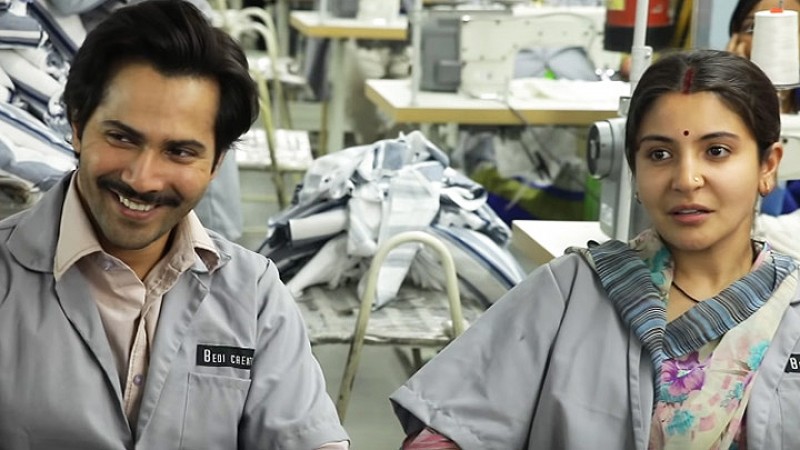
An amazing example of Indian cinema's ability to blend entertainment with social messages is the endearing Bollywood film "Sui Dhaaga: Made in India," which was released in 2018. Leading roles in the Maneesh Sharma-produced and directed movie by Sharat Katariya go to Varun Dhawan and Anushka Sharma. The story revolves around a couple from a small town who, inspired by Prime Minister Narendra Modi's "Make in India" campaign, set out to fulfil their entrepreneurial dreams. This article examines how the film "Sui Dhaaga" effectively conveys the spirit of the "Make in India" movement by elevating entrepreneurship, local craftsmanship, and self-reliance.
Prior to exploring the movie's story and how it represents the "Make in India" campaign, it is important to comprehend the background and goals of this revolutionary government programme.
The "Make in India" campaign was started in 2014 by Indian Prime Minister Narendra Modi with the intention of making India a centre for global manufacturing. The objective of this initiative was to stimulate manufacturing, foster innovation, and attract foreign and domestic businesses to invest in India. Reduced reliance on imports and the promotion of an independent India were the main goals, or "Atmanirbhar Bharat."
The endearing tale "Sui Dhaaga" takes place in the small town of Chanderi, where Mauji (Varun Dhawan) and Mamta (Anushka Sharma) battle to live. Mamta is a stay-at-home mom, and Mauji is a menial worker in a sewing machine repair shop. Their ordinary lives take an unexpected turn when Mauji, spurred on by the "self-reliant" ideal of the "Make in India" campaign, decides to launch his own company after experiencing humiliation at work.
Local Entrepreneurship and Self-Reliance: Supporting local entrepreneurship and self-reliance is one of the main goals of the "Make in India" campaign. In keeping with this spirit, Mauji uses a sewing machine his father gave him to launch a small tailoring company. Taking pride in his abilities and the regional craftsmanship, he offers fitted apparel that is "Made in India." This reflects the core of the campaign, which is to support the growth of small businesses in order to lessen the reliance on imports.
Accepting Customary Craftsmanship: "Sui Dhaaga" places a strong emphasis on the importance of customary Indian craftsmanship. Mauji and Mamta are proud of the work they do and make sure it has Indian cultural roots. In keeping with the campaign's goal of showcasing India's rich heritage, they exemplify the value of preserving and promoting Indian art and crafts by incorporating traditional hand embroidery into their products.
Promoting Skilled Labour: One of the main tenets of the "Make in India" campaign is the movie's emphasis on the value of skill development and vocational training. Mamta picks up embroidery skills from a local craftsman, while Mauji learns tailoring. The government's emphasis on skill development underscores its dedication to improving the employability of the Indian labour force.
Encouraging Rural Empowerment: The spirit of rural empowerment in India is encapsulated in "Sui Dhaaga" as well. The movie reflects the government's efforts to strengthen rural economies by encouraging local businesses and entrepreneurship. The voyage of Mauji and Mamta becomes a representation of the strength and promise of rural India.
Creating a Brand: The movie depicts the difficulties Mauji and Mamta face in creating their brand. Marketing their products and competing with well-known brands present difficulties for them. Nonetheless, their success is a result of their perseverance and high level of craftsmanship. This is similar to how the "Make in India" campaign emphasises creating a strong brand for Indian goods and services abroad.
Community and Innovation: The idea of community and innovation is one of the film's other major themes. Mauji and Mamta find inspiration and support in their families, particularly in their mothers, who embody the values and experience of the elder generation. The film promotes the idea that innovation can come from traditional roots; this idea is consistent with the "Make in India" campaign, which aims to modernise and innovate while maintaining ties to India's cultural legacy.
Honouring Indian Entrepreneurship: "Sui Dhaaga" illustrates the tenacity, inventiveness, and success of Indian entrepreneurship. In keeping with the "Make in India" campaign's focus on personal empowerment and the possibility of change through grit and diligence, it emphasises the part that individuals play in determining their own destinies.
A powerful cinematic homage to Prime Minister Narendra Modi's "Make in India" campaign is "Sui Dhaaga: Made in India." The film effectively conveys the essence of the initiative, which promotes self-reliance, local craftsmanship, and entrepreneurship, with its endearing narrative and relatable characters. The journey of Mauji and Mamta, which is based on traditional Indian values and abilities, is a perfect example of the government's goal of making India a hub for global innovation and manufacturing.
It is important to remember from the movie that the "Make in India" initiative is a vision that every person and community can support rather than merely a government policy. "Sui Dhaaga" inspires its viewers to be proud of their abilities, patronise small companies in their community, and help the country develop. That's why it's such a compelling and endearing representation of "Made in India" on the big screen. It echoes the belief that the people, their creativity, and their craftsmanship are what truly hold India sacred.
Varun Dhawan's Unparalleled Dedication to 'Sui Dhaaga' Role